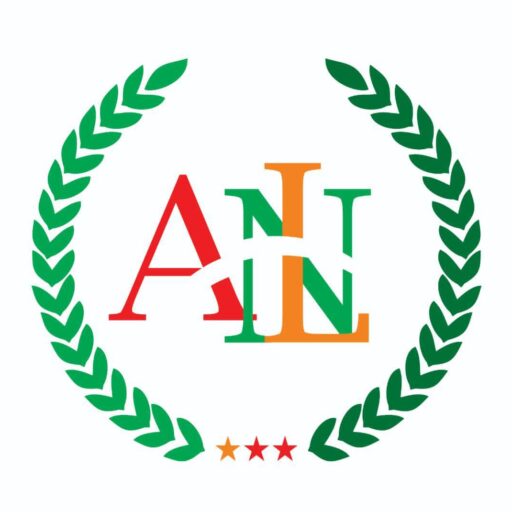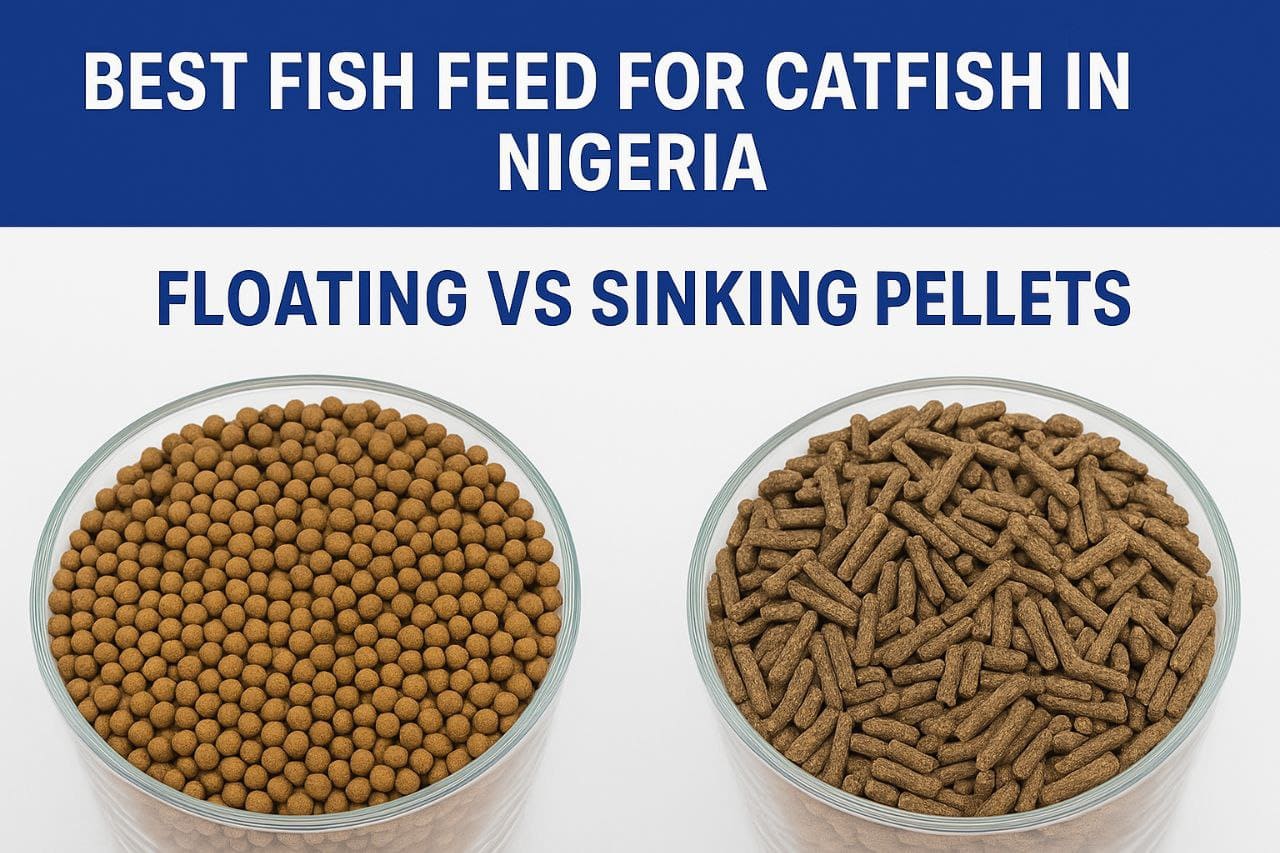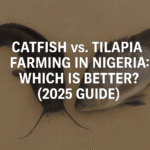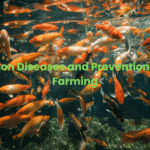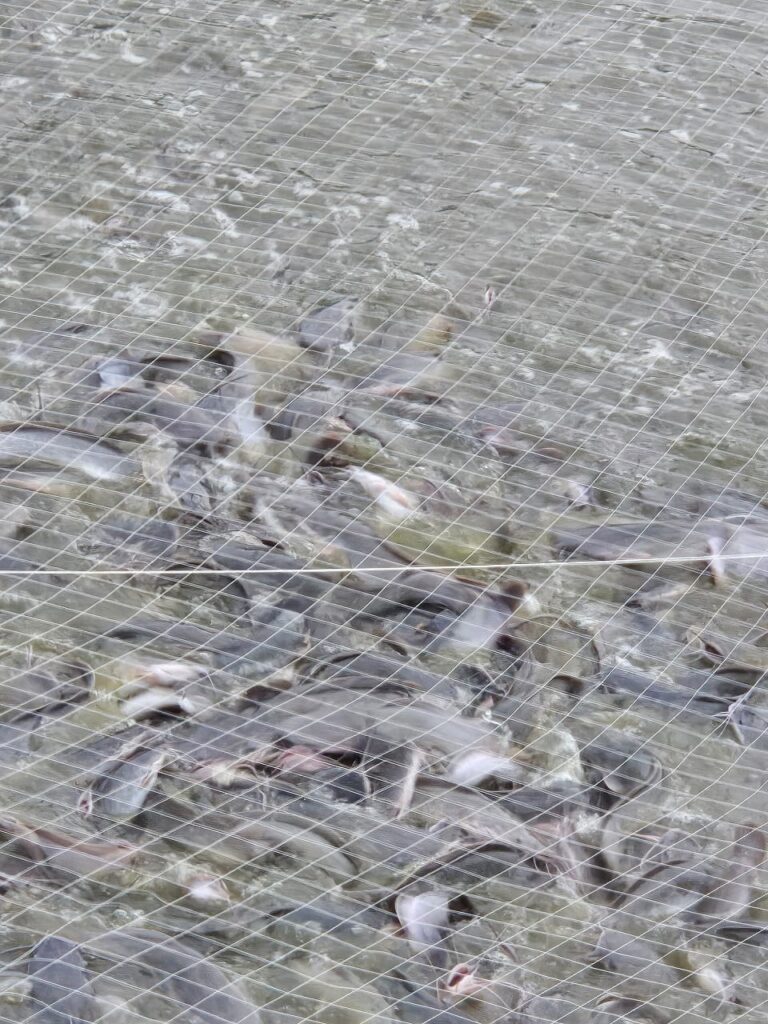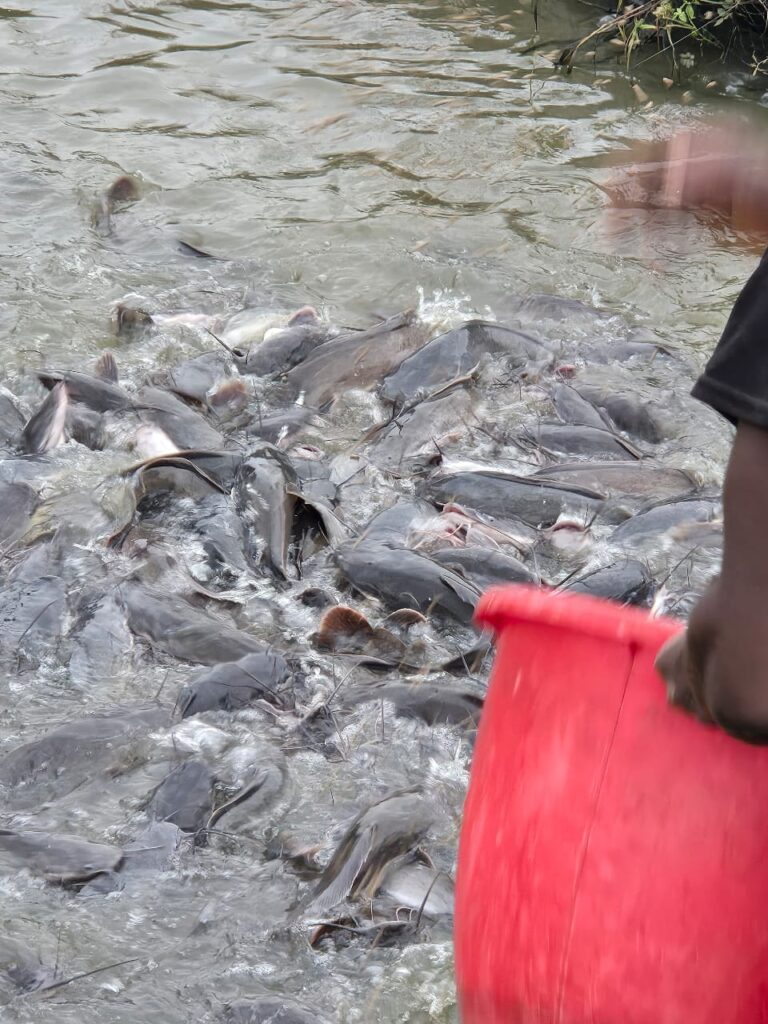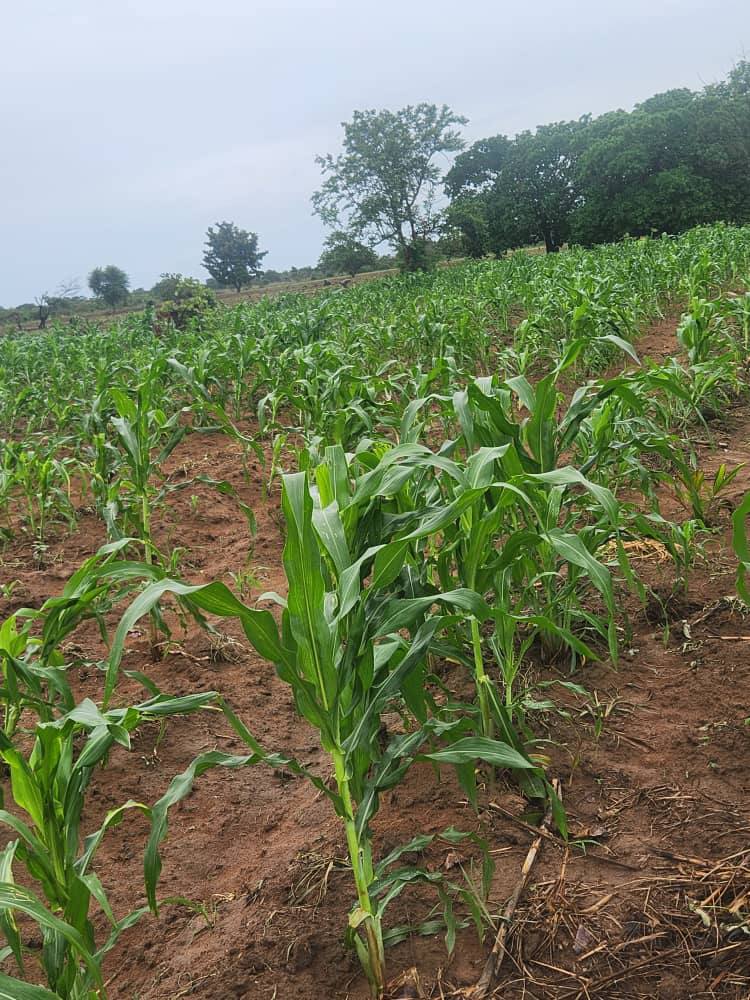In catfish farming, choosing the right fish feed plays a vital role in ensuring faster growth, better health, and higher profit margins. The type of feed you choose not only affects your fish’s growth rate but also determines how efficiently you use resources and maintain water quality. In Nigeria, two main types of pellets are …
In catfish farming, choosing the right fish feed plays a vital role in ensuring faster growth, better health, and higher profit margins. The type of feed you choose not only affects your fish’s growth rate but also determines how efficiently you use resources and maintain water quality.
In Nigeria, two main types of pellets are commonly used for catfish farming: floating pellets and sinking pellets. Both have their advantages and disadvantages, but knowing which to choose can make a big difference in your farming success.
This guide breaks down everything you need to know about floating and sinking pellets, their pros and cons, and which one is the best choice for your catfish farm, so you can confidently choose the best feed for your catfish farm.
Understanding Catfish Feeding Behaviour
Catfish are naturally bottom feeders. In the wild, they spend most of their time near the bottom of rivers or ponds, searching for worms, insects, and plant matter.
However, in fish farming, you can train them to eat from the surface. This is why floating pellets are popular; they allow farmers to watch the feeding process and control how much the fish eat.
The type of feed you choose will depend on your budget, farming goals, and how closely you want to monitor your fish.
What are Floating Pellets?
Floating pellets are fish feed designed to stay on the water’s surface for a long time before gradually sinking. This encourages catfish to come up to the surface to feed. They are usually round or circular and made with ingredients like fishmeal, grains, binders, and other naturally buoyant components.
When you use floating feed, your catfish must come up to the surface to eat, which makes feeding time more interactive and easier to control.
Advantages of Floating Pellets
- Effective Monitoring: Makes it easier for farmers to observe feeding behaviour, check for signs of disease, and track fish growth.
- Better Water Quality: Since the feed stays on the surface, there’s less risk of it rotting at the bottom and polluting the water.
- Improved Feed Efficiency: Reduces wastage and ensures fish consume most of the nutrients.
- Versatility: Can be used for multiple fish species and various life stages.
Disadvantages of Floating Pellets
- High Cost: Generally more expensive than sinking feeds.
- Weather Impact: Windy conditions can blow the feed away from the feeding area.
- Less Ideal for Bottom Feeders: Since catfish are naturally bottom feeders, they may need some time to adjust to surface feeding.
What are sinking pellets?
Sinking pellets are designed to sink quickly to the bottom of the pond, where catfish naturally feed. They are usually longer in shape and made from denser ingredients like fishmeal and fish oil. This type of feed is closer to the fish’s natural eating habits, which means they will accept it immediately without training.
Advantages of Sinking Pellets
- More Economical: Cheaper than floating pellets, making them budget-friendly for farmers.
- Resistant to Weather: Since they sink quickly, wind cannot blow them away.
- Natural Feeding Habit: Better suited for bottom feeders like catfish.
Disadvantages of Sinking Pellets
- Difficult to Monitor: Farmers cannot easily observe how much feed is eaten or check fish health during feeding.
- Water Pollution Risk: Leftover feed can rot at the bottom, causing poor water quality and possible fish health issues.
- More Feed Wastage Risk: You might feed too much without realising it.
Floating vs Sinking Pellets: Key Differences
| Feature/Factor | Floating Pellets | Sinking Pellets |
|---|---|---|
| Feeding Position | Surface | Bottom |
| Cost | Higher | Lower |
| Monitoring Feeding | Easy | Difficult |
| Water Quality Impact | Better | Risk of pollution |
| Weather Resistance | Can be blown away | Not affected |
| Suitable for Catfish | Yes (with training) | Yes (natural) |
Tips for Choosing High-Quality Fish Feed
- Check the Protein Content: For juvenile catfish, 35–42% protein is best; for adult catfish, 28–32% is enough.
- Buy from Trusted Suppliers: Avoid low-quality feeds that break apart in water.
- Look for Freshness: Feed should have no foul smell or mould.
- Store Properly: Keep feed in a cool, dry place to avoid spoilage.
Which Is the Best Fish Feed for Catfish?
Nutritionally, there is no difference between floating and sinking pellets if they are made to the same standard. The choice depends on your farming goals and priorities.
While catfish are naturally bottom feeders, many Nigerian farmers prefer floating pellets for business reasons:
- Better Monitoring: You can easily monitor feeding and adjust feed quantity to avoid wastage, and this lets you control feeding quantity and check for signs of disease.
- Quick Response to Problems: Makes it easier to notice missing fish due to predators like snakes and take action. You can spot sick or inactive fish quickly.
- Water Quality Preservation: Reduces uneaten feed at the bottom, helping to keep the pond clean, and you can reduce the risk of water pollution.
- Improved Growth Rates: You can act fast if you notice predators like snakes reducing your stock. This encourages more active feeding and ensures better nutrient uptake.
If your budget is tight or you’re raising catfish in a controlled indoor system, sinking feed can still work, but you’ll need to be extra careful to avoid overfeeding.
Frequently Asked Questions (FAQ)
1. Which is better for catfish farming in Nigeria, floating or sinking feed?
It depends on your farming method and budget. Floating feed is great for monitoring feeding and reducing waste, while sinking feed is often cheaper but harder to track. Many farmers start with floating feed for juveniles, then switch to sinking feed as the fish grow.
2. Can I mix floating and sinking pellets in one feeding?
Yes, you can! Some farmers use a combination to save costs while still keeping an eye on fish feeding activity. Just make sure the fish are big enough to handle sinking pellets without missing their share.
3. What is the ideal protein percentage for catfish feed?
- Fingerlings: 40–45% protein
- Juveniles: 35–40% protein
- Grow-out stage: 28–32% protein (Always check the label of any feed you buy)
4. How many times should I feed my catfish per day?
Fingerlings and juveniles should be fed 2–3 times daily, while adult catfish can be fed once or twice daily. Overfeeding leads to waste and water pollution.
5. What are some top fish feed brands in Nigeria?
Popular brands include Admumsho Nigeria Limited, Feeds, Coppens, Skretting, Aller Aqua, Topfeed, Blue Crown, and Ecofloat. Some local mills also produce quality feeds at lower prices.
6. Are imported feeds better than local feeds?
Imported feeds like Coppens and Skretting have a reputation for high quality and consistency, but they can be expensive. Some Nigerian brands are now producing high-quality feeds at more affordable rates, like Admumsho Nigeria Limited Feeds.
7. How do I know if my catfish are getting enough food?
Watch their behaviour; if they stop coming up for pellets or lose interest quickly, they are probably full. Also, healthy catfish should grow steadily and show no signs of starvation (thin bodies or stunted growth).
8. Is homemade catfish feed worth it?
Homemade feed can save money if you have the right ingredients and equipment. But poor formulation can lead to slow growth or disease, so always get a tested recipe from a reputable source.
9. Can catfish eat only sinking feed?
Yes, they can. Wild catfish naturally feed at the bottom. However, in commercial farming, floating feed is preferred for easy monitoring.
10. How should I store catfish feed?
Store pellets in a cool, dry place, away from moisture and direct sunlight. Seal the bag after use to keep out pests and prevent mould.
11. How long does catfish feed last before it spoils?
If stored properly, most commercial fish feed lasts 3–6 months. Always check the manufacturing date and expiration date before buying.
12. Does water quality affect how fish feed work?
Absolutely! Poor water quality reduces fish appetite and slows digestion. Clean, well-oxygenated water ensures your feed is fully utilised.
13. Why do some farmers start with floating feed and switch to sinking feed later?
Because floating feed is great for early growth and monitoring, while sinking feed is cheaper for larger fish that eat more.
14. Can overfeeding harm my catfish?
Yes, uneaten feed sinks, decays, and reduces oxygen in the pond, which can kill fish. It also wastes money.
15. What’s the cheapest way to feed catfish without affecting growth?
Buy in bulk, mix premium floating feed with quality local feed, or produce part of your feed if you have the expertise.
Conclusion
For Nigerian catfish farmers focused on profitability, monitoring, and water quality, floating pellets are generally the better option despite their higher cost. They give you better control over feeding, allow quick health checks, and help maintain cleaner pond water.
However, if cost is a major concern and you’re confident in your feeding management, sinking pellets can also work—especially in controlled environments.
The choice between floating and sinking pellets comes down to your farming style and budget.
- If you want better monitoring, faster growth, and cleaner ponds, go for floating pellets.
- If you want cheaper feed and are okay with less monitoring, you can try sinking pellets.
In 2025, with rising feed costs in Nigeria, many successful farmers are finding a balance, using floating pellets during critical growth stages, then switching to sinking pellets later to save costs.
